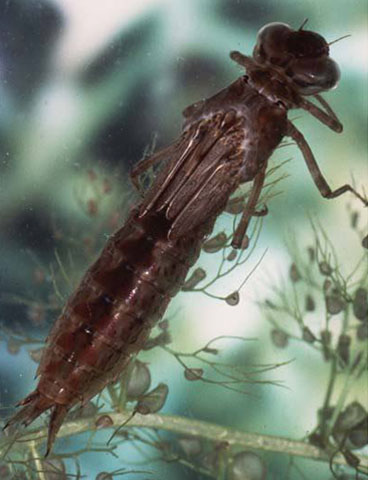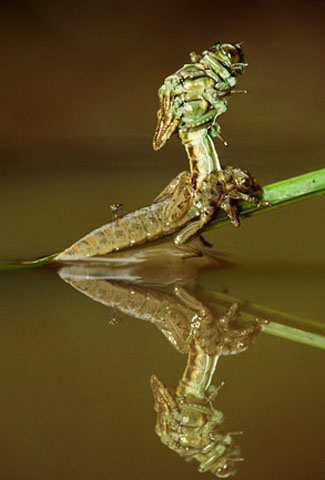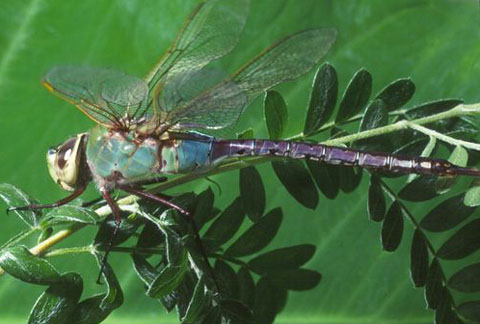Birds and Plants of Kauai:
Pinao
by Linda Pascatore on 29 July 2007
The Giant Hawaiian Dragonfly or Pinao, is endemic to Hawaii and common on main islands. It is the largest dragonfly in the United States and the fastest flying.
The scientific name for this dragonfly is Anax Strenuus, from the Family Aeshnidae. Another common name for this insect is the Giant Hawaiian Darner. There are 32 species of dragonfly native to Hawaii. The Hawaiian name for dragonfly is Pinao. In Hawaiian myths, the Pinao was descended from the ant, or Naonao.
Pinao have two pairs of wings and a long, thin body, with six legs. They have compound eyes which give them excellent vision. They are active only during the day. Both sexes are a pale green color, and the male of the species has blue marking on the abdomen.
Dragonflies have two pairs of wings, and unlike their smaller relatives, Damselflies (Pinao ula), they can not fold their wings back, so they rest with wings spread. In the past, dragonflies grew to be much larger than they are today. During the Permian period, the largest dragonfly Meganeura monyl, now extinct, had a wingspan of about 29 inches. Today the largest wingspan is found in the Pinao, at 7.5 inches.
These dragonflies are commonly found at higher elevations, usually along streams or in wetlands, on all the Hawaiian Islands. They trap their insect prey in their legs. Their diet includes mosquitoes, midges, flies, bees and butterflies.

image above: Aqautic larva of Variable Darner dragonfly (Aeshna interrupta)
Eggs are lain on plants in the water. There is a larval stage, nymphs or naiads, which are aquatic. This stage takes most of their life span. The nymphs look like a smaller, fatter, wingless adult. They breathe through gills on their abdomens. They feed on insects, small shrimp, and tadpoles which they catch with their tongues.

image above: molting Clubtail dragonfly (Gomphus flavipes) emerges from larva
They molt several times until they have wings, then they leave the water and take to the air. The adult stage can live up to four months.The dragonflies are not dangerous to humans, as they will not bite or sting unless grabbed or trapped. They are beneficial in that they eliminate mosquitos and other pests.
Pinao are endangered in Hawaii. This is due in part to predation on its larvae by introduced, non-native fish; and because of habitat loss caused by water diversion and development.
|




